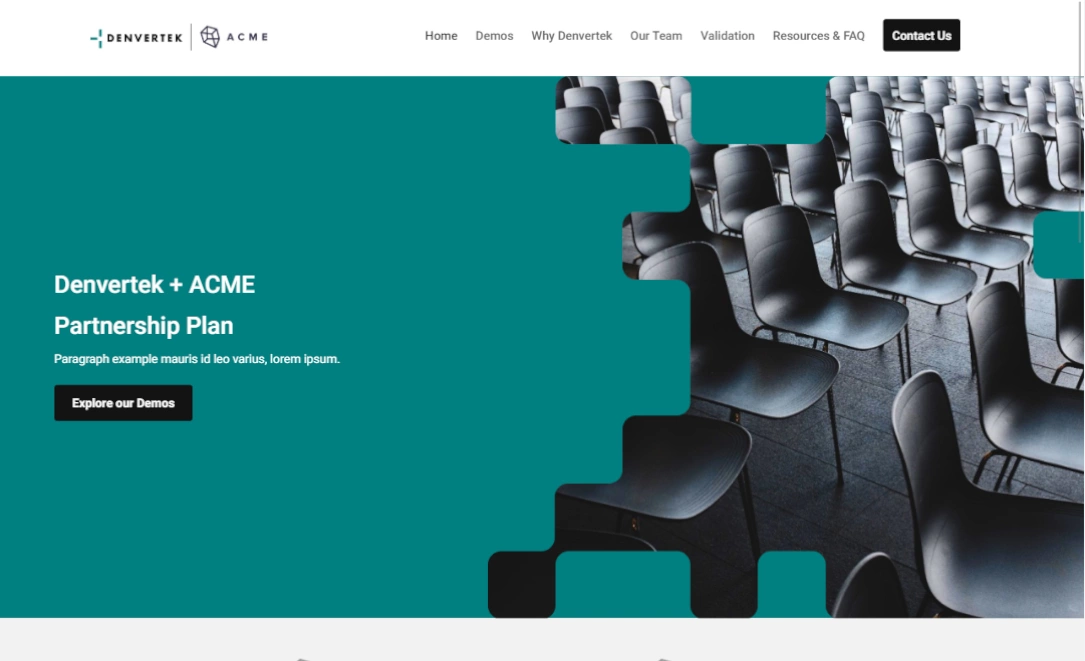As the world becomes increasingly digital, it seems like we all default to our computers, phones, or tablets for information about anything and everything. And while it would be cool to have a website that has all of the information anyone could ever need to know about your company on, it would be an overwhelming experience that would wreak havoc on your engagement numbers.
That’s where a microsite comes in, making it possible for you to expand your reach and share information with the right people without overhauling your website. Plus, hosting a microsite can be just as easy as hosting a traditional webpage, if not easier. In this article, we’ll describe the differences between microsite hosting and traditional web hosting.
What’s the difference between a microsite and a website?
From a user perspective, microsites may not seem all that different from a website. However, the two are used strategically in different ways. Knowing the core differences between the two will help you make the right decision about which to use for content sharing and creation.
First, microsites and websites vary in scope. Websites work more like fishing nets, while microsites are more like fishing poles. Both are looking to catch a bite, but one involves a more specific target.
Because a website is looking to cast a wide net, it typically includes plenty of subpages and information that offer a base-level introduction to the most fundamental needs of any given stakeholder. This might include things like an about subpage, your inventory, a breakdown of your services, contact information, and testimonials.
A microsite, on the other hand, has a targeted audience with a plan of specific actions or experiences it wants that audience to experience. The information here may be narrowed to a specific purpose and it may feature less of the extra “fluff” the main website might have. The goal is to keep users highly engaged by helping them get to the point quickly.
From a back-end perspective, though, they tend to run the same way.
Is microsite hosting different from web hosting?
It all depends on your domain and provider
Depending on how you want to do it, there may be additional steps for hosting your microsite. This starts with how you want to set up its domain and the provider you’re using to host it.
If your microsite is a subdomain of an existing website that you own, you can generally avoid setting up additional web hosting for it. Most providers will include this in the price of your primary domain.
Using a subdomain of an existing website makes sense in a lot of microsite use cases, especially if you want to keep the content as a focused offshoot of your website. This is a great strategy for things like sales pitches, recruitment, or learning and development initiatives. It keeps your microsite closely tied to your main webpage, and makes remembering the URL more intuitive for users.
However, if you want your microsite to be an immersive content experience, highly customized proposal, or temporary campaign, you may want a unique domain. In this case, you may need to pay additional hosting fees or find a new domain provider. This can be a challenge for some, especially those who want to leverage the use of microsites on a continued basis.
Shopping for a domain provider can be as difficult as shopping for the perfect pair of jeans. They all may seem vaguely alike, but the fit is just always slightly different. Plus, the difference in prices can be shocking.
Getting around fees may lead you to use a free domain hosting service, though it’s important to know that these services are often free because they make up for lost costs with ads and promoted content, which may distract from the immersive experience you are looking to create.
The best option for these purposes, especially if you’re looking to make the most value out of continued microsite strategies, is to use a microsite builder that allows you to create an unlimited number of microsites. It involves virtually no risk, no ads, and allows you to be as creative or consistent in your microsite content as you like. Plus, there’s no coding involved.
Microsite hosting is very similar to regular web hosting
Microsite hosting is as simple as typical web hosting. It involves all of the same mechanical aspects of a traditional website but may vary in the design process and content creation.
Before you begin creating or looking into hosting your microsite, map out what you want the site to accomplish and who will be using it. This will help you make decisions about your URL, design, and content. Ask yourself:
- Who will be using the microsite, and what for?
- Will it serve the purpose of my microsite well if it is closely connected to my main webpage, or should this be a unique experience for users?
- Is there a specific theme, brand, slogan, or concept I want to reflect in the URL?
Like traditional website hosting, you’ll begin the process by registering a domain. According to Google’s general guidelines for web development, the best practice is to stick with something simple. Your URL should:
- Be descriptive and simple
- Use specific keywords connected to the content
- Be easy to read, without long number chains or unreadable letter combinations
- Stick to hyphens rather than underscores, as they’re easier to see in a URL box
There are plenty of domain registrars to choose from. When choosing one, find one with reasonable costs, weighing in domain extensions. You’ll also want them to be reliable and transparent with their policies. Also, look at what additional services they offer. This legwork will save you some headaches later.
With a domain ready to go, you can start building your microsite according to your goals. Like traditional webpages, microsites require some maintenance depending on what they are being used for. Temporary microsites should be removed when the initiative they are attached to is over, and information on your microsite should be kept current if you plan on leaving it up for longer.
Figuring out a good hosting provider
The easiest way to create your microsite is by using the same hosting provider as your primary website. This will streamline the process of being consistent with your brand guidelines and keeping the two web pages closely linked.
If microsites are a communication tool you see yourself using frequently, finding a hosting provider that can meet your ongoing needs is worthwhile
The right hosting providers should make the process simple and offer robust services. Look for a service provider that is reliable and has consistent uptime. Some budget options may be tempting, but they may also cost you frequent downtime.
You should assume that at some point you’ll run into some problems. Being prepared means picking a hosting provider with customer service options that are easily accessible. Again, skimping out here may cost you in the long run, especially if you don’t have a dedicated web development team.
Oftentimes, people begin services without realizing that certain features need to be specifically sought out, or they risk setting their projects back. Here are some features to keep an eye out for:
- Unlimited storage for content
- A good bandwidth
- Security features
- Analytics tools
Finally, make sure your hosting provider makes maintaining your microsite easy and user-friendly. Look for testimonials and reviews whenever possible, as these will give you the best picture of who is using the hosting service for different reasons.
Microsite platforms can offer hosting services
Consulting fees or hiring new staff to create microsites can significantly add to a project budget. So, if you’re looking for a more “DIY friendly” approach, a microsite platform may be the way to go. Many of the microsite builders out there also offer hosting services.
These services offer a one-stop shop for hosting, design, analytics, and security. Like web hosting providers, though, these services are not all the same.
Choosing the right one should incorporate all of the necessary pieces for robust microsite development: unlimited storage, advanced security features, customer support, and guaranteed performance. Your microsite builder should also be easy to use from a development standpoint, too.
If you want to give everyone on your team access to collaborating on a microsite, opting for an intuitive platform is the best way to go. Look for services that offer sleek drag-and-drop design platforms, easy-to-read analytics, and premade templates.
Zoomforth will host your microsite for you as part of our package
Many microsite builders offer hosting as an additional feature. However, this additional feature comes with additional costs, too. What if there was a microsite builder that offered to host as a default, too? There is, and its name is Zoomforth!
Microsite hosting is easier than ever with Zoomforth. It makes it possible for you to create as many microsites as you’d like in one spot, with easy-to-use features. Plus, if you ever run into a problem, our team is here to help 24/7. There are also plenty of microsite resources to use for self-learners.
Interested in hosting your microsites with us? Try out a demo with Zoomforth today!



